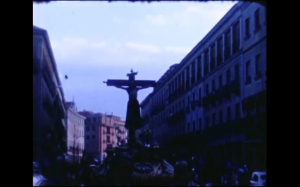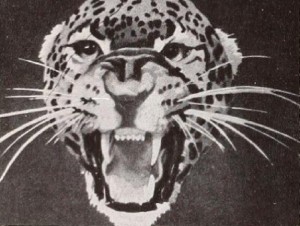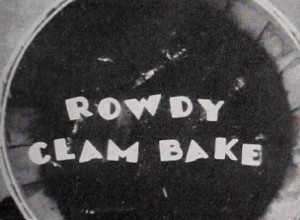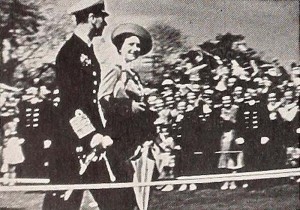"A couple dine in a restaurant. She is so busy with powdering her nose and correcting her lipstick that the "garçon" despairs of ever getting their order. In the end, her suitor orders water and razor to get his revenge." Library and Archives Canada.

"Documentary: On peasant farm life in Korea, the rice crop and family labor." National Archives.
"'Rice,' a three reel subject in the educational class entered by F. C. Ells of Yokohama, Japan, demonstrated a fine appreciation of production and photographic values as well as how to combine it so as to make entertainment. Many were of the opinion that this picture, if it were in 35mm, would be worthy of professional theatre presentation." American Cinematographer, Dec. 1933, 321.

Documental sobre la Semana Santa en una ciudad de Castilla, donde la paz contrasta con la violencia de otras partes del mundo.
Documentary about the Holy Week in a city of Castilla, where peace contrasts with the violence lived in other parts of the world.

"Competence plus completeness distinguish Ringling Brothers and Barnum & Bailey Circus. Oscar H. Horovitz started his film with sequences of the circus's winter quarters in Florida and followed it as it entrained for Northern performances. Unloading the circus comes next, and, after informal views of the crews at work setting up tents and the performers preparing for work, there is a complete picture of the show in the big top. The quality of the lighting, although limited by the amount of illumination provided by the circus, is still astonishingly good. Even better is the sequencing of the scenes of the performances, for Mr. Horovitz succeeds in altering his camera positions almost as freely as if the circus were staged especially for him." Movie Makers, Dec. 1943, 478.
"The faded colours do not detract from this charming record of life in Preston, on the river Ribble. Children play in the street, women stroll in Avenham Park, and shoppers crowd an outdoor market. Community events and the bright lights of Preston at night complete this picture of life in the Lancashire town (now a city)." (BFI Player)
"Item is a film production of a trip from Naples to Nice taken by Dr. Willinsky and his wife, Sadie. In the form of a travelogue, footage of landmarks, ancient ruins and the local population is interspersed with captions and maps that were added in by Dr. Willinsky to denote locations and offer context. Featured cities include, Pompeii, Salerno, Rome, Cannes, Antibes, and Menton. Footage includes shots of Vesuvius, images taken from a gondala ride in Venice, Venetian street performers, market scenes, cathedrals, children dressed in costumes for a carnival, and various local craftsmen at work. Sadie is occassionally spotted in the footage interacting with locals and with travel companions who are probably relatives or family friends." Ontario Jewish Archives.
"Item is a film taken by Dr. Willinsky of a trip to Italy. In the form of a travelogue, footage of landmarks, ruins and the local population is interspersed with captions that were added in by Dr. Willinsky to provide information about the country's history and culture. Although the title highlights the film's documentation of Rome and Naples, other Italian cities are featured as well; including, Pompeii, Florence and Venice. Dr. Willinsky's wife, Sadie, is occassionally spotted in the footage with travel companions who are probably relatives or family friends." Ontario Jewish Archives.
"A record of the Indian rope trick, with magician, attendant and boy who apparently climbs the straightened rope and disappears. The boy is restored and tribute exacted from the crowd." (EAFA Database)

"Wilbur W. Krimpen's Rowdy Clam Bake is a sure source of delight for all lovers of food, drink or shuffleboard. It is a charmingly informal treatment of a clam bake through the successive stages of food preparation, cocktail time, shuffleboard (to whet appetites) and, ultimately, food consumption. In addition to its entertainment value, Rowdy Clam Bake rates high for its informative aspect, as it provides a step by step study of what constitutes a successful clam bake. The ingredients involved will not be listed here, lest the reader's credulity be strained. However, the film's parting shot, a closeup of an Alka-Seltzer container, is indicative of the epic dimensions of the feast." Movie Makers, Dec. 1948, 491-492.

"What we have all wished a newsreel presentation of an important event could be has at last been brought to actuality by T. J. Courtney in his fine Kodachrome film Royal Visit — Halifax 1939. Let us hasten to add, also, that this film, besides being the apotheosis of the newsreel presents a carefully connected story of the events of the long anticipated day of the Royal visit in his city. Chiefly outstanding is the skillful and always appropriate use of closeups and atmosphere shots made with great care before, during and after the event and cut in with real skill to heighten the effect. But, most of all, the film is remarkable for its pace and sincere interpretation of public feeling; the early preparations for the Royal visit; the breathless expectation; the high enthusiasm at the time of Their Majesties' appearance, the promise of long remembrance at their departure — all these are clearly shown by Mr. Courtney's cinematic commentary. The complications that must have confronted him on this exciting day must be considered in our approval, too. He succeeded admirably in picturing the general excitement and enthusiasm, but at no time did his camera desert its steady support and accurate framing of the principal subject. The natural, close shots of the King and Queen are unsurpassed." Movie Makers, Dec. 1939, 632.
Total Pages: 39